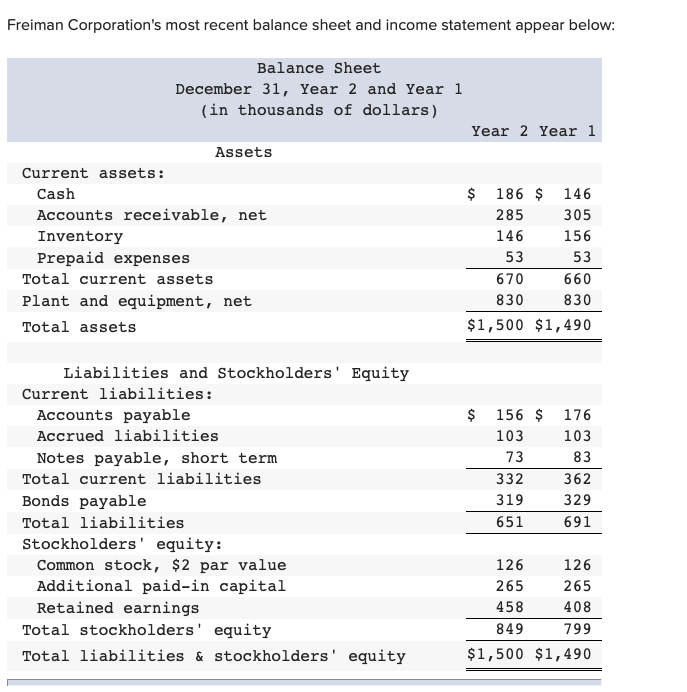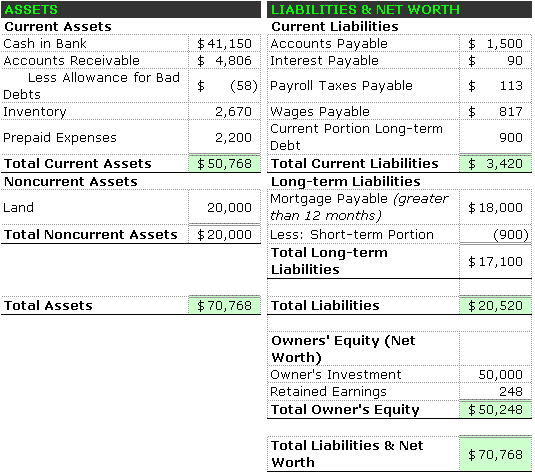
They are generally considered to have low liquidity because these assets may take a long period of time to earn cash value. They usually cannot be converted into cash within one year or be sold at their desired value quickly. Such kinds of assets include land, buildings, furniture, or any other type of asset that is not intended for sale within the year. As the rental period or periods covered by the prepaid rent payment occur, the prepaid rent asset account is decreased, and the rent expense account is increased. Rent is commonly paid in advance, being due on the first day of that month covered by the rent payment. The landlord typically sends an invoice several weeks early, so the tenant issues a check payment at the end of the preceding month in order to mail it to the landlord and have it arrive by the due date.
Prepaid Rent Journal Entry
When reviewing this line item, it’s important to substantiate the balance with source documents. This could include bank statements, billing statements and other documentation, to assure the advance payment balance is complete and accurate. It is important to note that prepaid rent will not impact the straight-line rent calculation. Straight-line rent is an even amount that is applied to every single month, regardless of whether a cash rent payment is made or not. Therefore, when the prepaid rent is applied, there will be no reduction in the lease liability for that month. However, the right-of-use asset will be amortized, which will be recognized as an expense on the income statement.
Rent Expense:
In the balance sheet, prepaid rent is presented under current assets, indicating that the company expects to utilize the rental benefits within the next year. This placement among assets is crucial as it informs investors and creditors about the company’s short-term financial commitments and its allocation of resources. The clarity of this information can influence lending decisions and the assessment of the company’s liquidity. The process of accounting for prepaid rent involves specific journal entries that capture the initial transaction and the subsequent monthly recognition of rent expense.
Prepaid rent journal entry
When the check is written on the 25th, the period for which it is paying has not occurred. Therefore the check is recorded to a prepaid rent account for the timeframe of the 25th through the end of the month. On the first day of the next month, the period the rent check was intended for, the prepaid rent asset is reclassed to rent expense. Prepaid rent is an important expense account to understand on the balance sheet. Whether it is an asset or liability depends on the party remitting payment and the one receiving it. Proper recording and amortization of prepaids is important for producing accurate, reliable financial statements.
However, when the services are taken during the rental period, the prepaid rent is credited, and the rent expense will be debited. Therefore, the prepaid expenses are recorded as a debit of cash, and receiving unearned revenue is a credit of cash. For example, if you have a debt obligation, such as a loan, and you owe $1,000 next month but decide to pay that amount this month, that is a prepayment. A prepaid expense, on the other hand, is any good or service that you’ve paid for but have not used yet.
- The lease expenses for each year are $36,721, which perfectly reflects the payment made every year (even if Year 1 was prepaid).
- For example, a tenant who pays rent for the upcoming month or several months in advance is considered prepaid.
- Both prepaid and postpaid rent arrangements are used in different rental agreements, depending on the terms agreed upon by the landlord and tenant.
- Fixed assets, on the other hand, also known as noncurrent assets, hard assets or long-term assets are not as liquid as current assets.
Prepaid rent is the amount of cash paid by an entity against future rental periods. Although the cash has been credited, the entity has not utilized the service yet. A common concern of business owners who do accounting by themselves is whether prepaid rent assets or liabilities the prepaid rent is an asset or a liability. Proper accounting procedures and controls must be in place to ensure that prepaid rent is recorded correctly, accounted for, and not misused or used as a means of financial manipulation.
This entry moves the expense from the balance sheet to the income statement, reflecting the consumption of the rental benefit over time. The monthly amortization ensures that the expense recognition aligns with the period in which the space is utilized, maintaining adherence to the accrual basis of accounting. In this case, the difference is a loss of $175, so the owner’s equity has decreased from $7500 at the beginning of the month to $7325 at the end of the month. Every month must be listed under the original monthly rental expense, regardless of what was actually paid that month. Thus, a rent payment made under the cash basis would be recorded as an expense in the period in which the expenditure was made, irrespective of the period to which the rent payment relates.
Under ASC 842, you would see the same entries, but the prepaid rent would be recorded to the ROU asset in place of a separate prepaid rent account. Generally, variable, or contingent rent, is expensed as incurred according to both legacy accounting and the new accounting standard. The above example illustrates how the accounting equation remains in balance for each transaction. The accounting for prepaid rent involves making a journal entry that debits the prepaid rent asset account and credits cash or bank. As the rental period progresses, an adjusting entry is made to amortize the prepaid rent.
Specifically, they record a lease liability equal to the present value of future lease payments and a right-of-use asset that corresponds to this liability, with adjustments for certain amounts. Prepaid rent represents the amount that has not yet been used up or expired as of the balance sheet date. Therefore, it must be recorded as an asset on the balance sheet until the very month that this advance payment is exhausted. Then, when it eventually gets to the exact month that the rent is consumed, the asset-prepaid rent is shifted into an expense account. This means that the prepaid rent is recorded initially as an asset, but its value is expensed over time onto the income statement. Nevertheless, the issue of whether this security deposit is refundable or non-refundable would determine how the prepaid rent is treated for bookkeeping purposes.

If the lease agreement defines the rent payments as contingent upon a performance or usage but also includes a minimum threshold, the minimum is used in the calculation of the lease liability. Because of the inclusion of the minimum threshold, the lessee has a commitment to pay at least the lower amount regardless of actual performance or usage. While some variability exists in the outcome of the calculation, the minimum amount is fixed.
